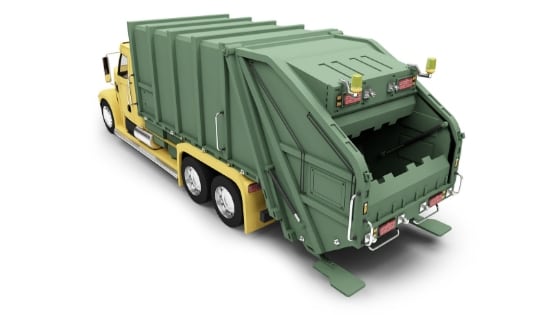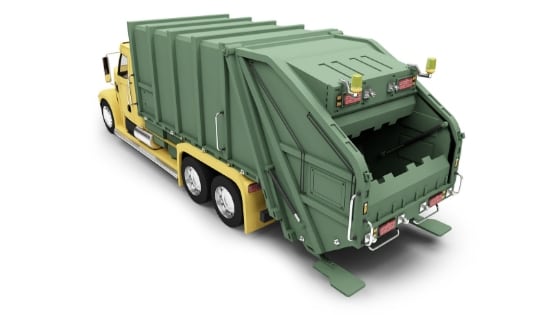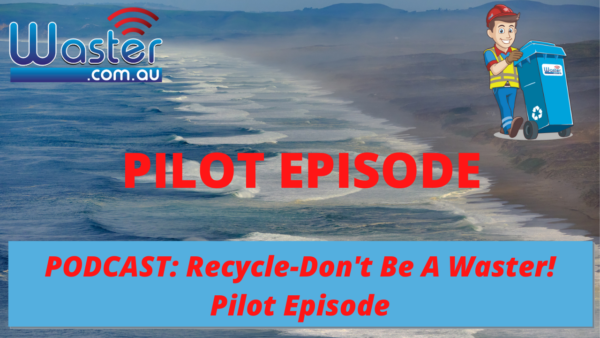Australian Garbage Trucks 🚛: Improve The Reliability of Waste Management Collections
Energy Disrupter
Australian Garbage trucks 🚛: when you book waste management or recycling services, reliability of collections has to be one of the most important aspects of good service. The waste industry has traditionally had a number of problems that have led to unhappy customers and unreliable service.
>Download Now: Free PDF Business Owners Guide To General Waste Bin Services
The rubbish collection combines a couple of required skill sets and specialisations. Australian garbage trucks need to accurately and safely travel to and from thousands of locations every night, removing and collecting the rubbish. This needs to be done reliably and in a timely manner. This combines expertise in logistics such as ensuring extra bookings and last-minute changes are factored in.
It must be remembered that due to ever-increasing traffic on our roads, Australian garbage trucks are fighting an uphill battle every day. It is getting harder to complete all required collections, especially when stuck in tailbacks and traffic jams. Of course, getting a large garbage truck through traffic and maneuvering to collect a bin is much trickier than a normal commute to work!
In this blog, we will cover a number of potential solutions for some of the bottlenecks that the rubbish trucks of Australia can face. How does a rubbish truck work?
Additionally, we will also answer some questions and provide some informative and insightful details about the garbage trucks in Australia.
How Waster is leading the way in Australian garbage truck services
Waster offers low cost and reliable garbage truck pick up and recycling services to small and medium Australian companies.
Through our online approach, you can ensure that you arrange Australian garbage trucks services at competitive prices and with no hidden fees. Check out our shop online today to see how much you can save:
Australian Garbage trucks: Can technology help improve the reliability of waste services and collections?
When arranging garbage truck pick up services for your businesses – there are commonly a number of bottle necks that you need to be aware off – we will address these below:
Delivery of bins
getting your bins on-site on the day as arranged can be trickier than you may expect. We often get calls from nervous business owners – who do not have garbage bins organised one day before their grand opening! It is sometimes tricky to explain why delivery will take a few days at a minimum – we usually say 7 days.
Australian garbage trucks companies may not always have the required bin sizes in stock, or the deliveries for that day are too many to be carried out – and hence may need to be carried forward to the following day.
Of course – prior to delivery – a health and safety assessment needs to be completed – and documentation provided to the garbage truck man (or woman) so they know where the bin is positioned and how to empty it.
Easy solutions in this regard would involve delivery company systems such as used by couriers, Amazon etc.
A simple app carried by the delivery person would let the customer know where they are and when the bin will be delivered. It will also enable an e-signature to be taken from the customer when the bin is dropped off. It is amazing how often customers have problems locating bins that have been delivered – i.e. many bins look alike for example! The systems available are plentiful – see attached.

Delivery day calendar
if you have ever had to leave bins out for a residential garbage removal collection, you will be aware of how easy it is to forget the day of collection. This problem can be magnified when your bins are picked up weekly or even less frequently. Waster is launching an app shortly to help customers easily remember when their next bin collection will occur. We will update you on this development prior to launch.
Garbage bin location sensors counteract theft of commercial garbage bins and also indicate to the garbage truck man where the bin is positioned. GPS trackers are becoming cheaper and more robust and reliable all the time. When you consider how many tons does a garbage truck weigh (c. 20 tonnes depending on size etc), you will understand why the sensor needs to be robust and reliable.
Usage of small sensors can really improve pickup accuracy.
[embedded content]
See our blog on waste collection.
Garbage trucks in Australia
there are lots of inefficiencies in commercial waste management and in the world of garbage truck routing and systems in Australia (and of course overseas also) – just like in all aspects of the wider logistics and transport/road haulage issues.
Waster is committed to delivering improvements to small and medium Australian business who require waste management and recycling depot services. In this regard, we leave no stone unturned.
Some experts on logistics and shipping argue that in the near future, we will see huge changes to any type of haulage. Of course, Australian garbage trucks services are no different.
What changes will we see in trucking and logistics?
Some changes we expect include – what now seems like science fiction – drones delivering parcels, 3d printing of items at home – and reduced garbage collection.
The changes in logistics will mean there is less rubbish to be removed as 3d printing leaves much less waste (if any) than a traditional manufacturing process.
Items delivered by drones that cannot be printed will also not be using traditional roads and trucking.
It certainly will be a brave new world!
Interesting article with implications for garbage truck Australia
The specialist trucking and logistics online magazine Supplychain247 had a recent article called: “Armstrong & Associates Highlights the Inaccuracy of the Term “Uber for Trucking”
One of the key points from the article was:
“This report shows the principle behind Digital Freight Matching may be simple, but the trucking industry is not. Domestic transportation is not a simple commodity. Complexities arise in the form of specialized equipment types, shipments transported via multiple modes, and necessary exception handling for service issues such as equipment breakdowns. Shipments are high-value and time-sensitive. Placing an Uber-like app atop a complex industry doesn’t truly address the problem. Shippers and Carriers alike will be disappointed if this is the extent of the ‘solution.’”

They concluded that though many people talk about Uber for trucking:
“And based on feedback from its participating companies in the report, Armstrong explained that the majority of DFM providers do not imitate Uber and they also don’t consider themselves as Uber for Trucking players either, instead they consider themselves far more trucking-specific for things that are leveraged by Uber but with a trucking emphasis, including algorithmic pricing, API map integration, track-and-trace, and mobile transactions – along with features specific to truckings, such as trip planning, digital document storage, and TMS integration.”
Check out our recent blog on tech changes affecting waste management in Sydney and also in commercial waste bins.
See our blog on why sometimes bins get missed in reliable waste management.
Australian garbage truck weight and dimension
We are often asked about the garbage truck dimensions Australia and garbage truck weight Australia – by customers who are developing new facilities – or have limited space for truck access.
[embedded content]
This can be particularly important when you are building a new structure or seeking planning permission.
The standard weight of a front lift or rear lift garbage truck Australia is c. 20 metric tonnes.
The dimensions are as below for the rear lift truck:
Overall length – 8.0m
Overall width – 2.5m
Height (travel) – 3.4m
Height (in operation) – 3.4m
Weight – vehicle only – 13.0 tonnes
Weight – payload – 9.5 tonnes
Turning circle – 25.0 m
Here, you can see a rear load truck:
[embedded content]
As for the front end loading garbage truck dimensions:
Overall length – Max 11.0m
Overall width – 2.5m
Height (travel) – Max 4.2m
Height (in operation) – Max 8.5m
Weight (vehicle only) – 16.5 tonnes
Weight (payload) 11.0 tonnes
Turning circle – 25.0 m
Here, we share with you an example of a rear load truck:
[embedded content]

At Waster, we often provide companies and people planning businesses info on garbage trucks in Australia for their new building project or business. Quite often, when a new project is going through the planning phase and requires the relevant permits, the local council looks at areas such as waste removal and recycling.
In this part of the blog, we will cover some of the key questions that we are often asked in this context. This should give you a good understanding of what is possible etc regarding rubbish trucks in Australia and commercial waste services for your new business venture.
About Waster
Waster.com.au is a business that supplies reliable waste management and recycling services to small and medium Australian companies.
We provide all waste and recycling services that you may require through our flexible 30-day agreements. You can boost recycling, save money and avail of our leading customer service.
For all things regarding garbage trucks in Australia, check out your bin size options and costs below:
Australian garbage trucks: can your new location arrange waste services?
If you are launching a new business and building or opening new premises, you may be asked to get a letter from rubbish trucks in companies located in Australia attesting that they can provide the relevant services.
Why do I need a letter stating I can arrange commercial waste services?
The principal issue will be that the council and planning authorities will not be providing you with waste services at the new location.
Before you are granted planning permission – you will require a letter from an Australian garbage truck company – stating they can provide the services as required.
The questions to answer will be as below:
Can waste and recycling services be provided at this location?
If your location is in a metro region, waste services will almost always be able to be provided. The bin sizes may limit the time and day.
You may need to arrange services for just one day a week if you reside in a remote or hard to access area without many businesses nearby. This could be the case for childcare centres, aged care facilities, etc that are located in residential areas.
See our blog on the density of general waste – a question that will impact the cost.
When will they be provided?
Australian garbage trucks for businesses will run at certain times – generally overnight or in the early morning. This means that traffic can be avoided. And it can also mean no impact on customer businesses.
If your location is based on a residential street or has residential nearby, it may be subject to council curfew. And also, no collections can happen before 7 am. This will make it more difficult to arrange services.

What bins will be provided and used?
In a residential area – front lift bins would not be suitable – as they could be dangerous for passers-by.
Smaller rear lift bin sizes – such as 240-litre wheelie bins or 660-litre bins would be most suitable. These bins could be positioned on the side of the road – or in a bin room accessible to the street.
Where will bins be positioned for collection?
As above – you should keep in mind that a garbage or recycling truck could weigh c. 20 tonnes and have a turning circle of c. 25 metres.
It is important that the truck should not drive on any road etc that can not support the weight.
Clearance overhead for truck access should also be 4m or more.
Bins should be brought to the street for collection if there is not sufficient space in a yard or car park – for the truck tom safely access and exit.
Does Waster charge for a letter for your DA application?
Waster does not charge for providing a letter in this context. For larger waste requirements – see our blog on industrial waste removal.
[embedded content]
Rubbish truck developments in Australia and all across the world
If you are interested in new environmental technology , you have probably heard that Tesla is soon launching a heavy electronic truck to the market.
You will be used to seeing electronic vehicles driving around our cities over the last few years — and maybe we will get used to electronic trucks also. Tesla expects its trucks to revolutionise heavy goods vehicles as below:
“In addition to consumer vehicles, there are two other types of electric vehicle needed: heavy-duty trucks and high passenger-density urban transport. Both are in the early stages of development at Tesla and should be ready for unveiling next year. We believe the Tesla Semi will deliver a substantial reduction in the cost of cargo transport while increasing safety and making it really fun to operate.”
When Tesla is not busy by sending new cars into space (I am still trying to get over that one), they are working on some modern and environmentally friendly heavy goods vehicles.
In this part of the blog, we will take a look at some of the latest technology impacting rubbish truck systems globally.

Australian and worldwide garbage trucks: will electric vehicles succeed where natural gas and hybrid has not been successful?
Another Tesla founder, Ian Wright, is also looking at electronic rubbish truck technology.
“Tesla cofounder Ian Wright and his company Wrightspeed teamed up with commercial truck builder Mac Trucks to create a new hybrid-electric trash haulier. They featured the Mack LR Model at the 2016 Waste Expo in Las Vegas, and was a move in the right direction for resource wasting refuse vehicles.”
“This hybrid-electric truck takes an innovative approach on electric vehicle design by taking the truck’s worst fuel-wasting components and then replacing them with electrical components. The resulting efficiency is staggering.”
“Following a mostly failed effort to convert the nation’s garbage trucks from diesel to natural gas, electric engines provide an excellent alternative. Garbage trucks are fuel guzzlers and typically only average around 3 miles per gallon, according to Governing. The campaign to convert them to natural gas has been largely unsuccessful, and only about 10 per cent of current garbage truck fleets run on natural gas.”
Taking a rubbish truck to an even higher level
If you thought that an electric truck was pretty high tech, what would you say about a jet-powered rubbish collection truck?
You can see a really interesting TedX discussion on the subject by New Zealand native and inventor Ian Wright as below. It will completely change your view I predict!
Through his company, Wrightspeed, he “has developed a turbine-assisted electric drive system and decided that its best use was in commercial vehicles, which burn through massive amounts of fuel and are subject to increasingly stringent emissions regulations.”
“The Wrightspeed system can be scaled up for heavier equipment, such as off-road construction vehicles, or down for medium-duty machines, he said.”
[embedded content]
I admit that I am not a mechanic and so some of the nuances go over my head. In general, the Wrightspeed system is designed to reduce costs and emissions.
“On average, an electric powertrain saves trash truck operators $35,000 a year in reduced fuel and maintenance costs, Wright estimates. The technology doesn’t require expensive exhaust treatment systems and, unlike diesel powertrains, doesn’t break down as often because it has fewer moving parts.”
Conclusion on Australian garbage trucks
“How much can a garbage truck lift?” “How many tonnes does a garbage truck weigh?” We answered all of these above to help you better understand garbage truck waste management.
We also stated the two types of garbage trucks’ dimension, which you should know beforehand.
Finally, we also discussed certain, exciting developments we hope to see in the future.
It certainly is an interesting and promising development. We will keep you updated on the development of this technology and the rollout schedule of these Australian garbage trucks.
It is also great to see an inventor from our part of the world really changing how things are done. For more innovation see our blog on Melbourne landfill and electricity generation.
See our recent blog on rubbish collections.
















